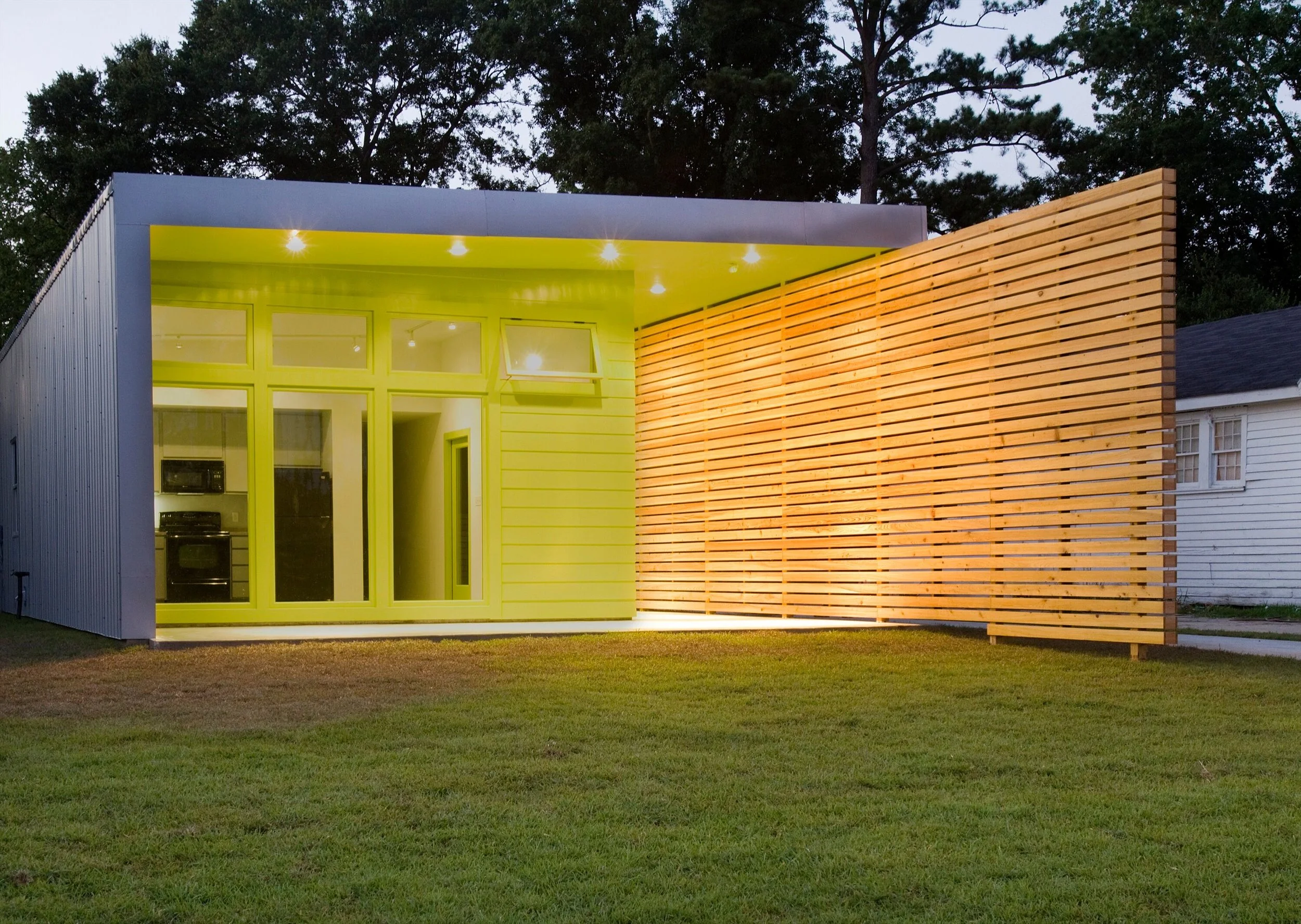Kiwi House
How many people does it take to make a full house? According to Peggy Mitchell, “You’re never full. There’s always room for more.” With 40 people seeking refuge in her 3 bedroom, 2 bath house after Hurricane Katrina, Peggy speaks from experience. Peggy and James Mitchell transplanted to Baton Rouge from New Orleans in the late 1970’s, and still have lots of family in New Orleans; family that needed shelter in August 2005.
Confidently serving as a Katrina refuge, James and Peggy opened their Valley Park shotgun home to all of their Crescent City evacuees, never thinking that they would be more impacted by the storm than most of their houseguests. “I was standing in the kitchen just staring at that side tree; just staring at it when I heard the one in the back begin to fall,” Peggy recalls. The 80 foot tree crashed through the house taking out two of the bedrooms and a bathroom. Though no one was hurt, the entire back half of the house was crushed leaving one bedroom and bath for 40 people to share. “We just made do. People slept on the kitchen floor, under the table wherever they could find a spot,” Peggy remembers.
And so they existed for nearly a month until New Orleans re-opened and the majority of their evacuees were able to return to their homes. By the beginning of October and with the occupancy down to 5 the Mitchells were finally able to get the tree removed from their home. With the tree gone, they were able to tear down the destroyed rear bedroom and bath, secure the doorways with plywood and cover the many holes in the roof with blue tarps.
For most, rebuilding would begin at this point, but not so for the Mitchell’s. Finances did not allow for traditional funding routes so they pursued less traditional ones. David Rubin, a local attorney and life long friend, helped navigate the government systems and agencies to get them what money he could. Unfortunately, the Mitchell’s were unable to find an Architect who could work within their limited budget.
Not willing to give up, Peggy turned to Habitat for Humanity. Economically, there was no question that they qualified but Habitat’s home design requires a certain lot size and the Mitchell’s lot, did not meet the criteria. They were given the option of receiving a Habitat house in a neighboring community, over 10 miles away. But Peggy and James had lived in Valley Park for over 40 years and had become a part of the community. Leaving was not an option, and neither was rebuilding. But, David Rubin did not give up either, and as he puts it “then I met +one.”
+one Design | Construction was recommended to Rubin as an architecture firm with a heart for the community that specializes in efficient, environmentally friendly design. Rubin soon discovered that +one’s commitment to creating well thought out design that is affordable, sustainable and preserves the spirit of a community fit perfectly with the Mitchell’s needs. Meeting with +one owners Fritz Embaugh and David Baird, Rubin was able to present the entire scenario, including the financial constraints and site limitations. Much to his surprise, Embaugh and Baird were confident they could help.
The Mitchell home – affectionately called the Kiwi House because of its somewhat rough exterior and cool, open interior – optimizes the layout and orientation of the site. In keeping with the traditional imagery of the neighborhood, the house is a modern interpretation of the shotgun house, built for a mere $98 a square foot.





